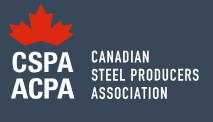
Canadian steel industry fears thousands of job losses from US tariffs
The Canadian steel industry is bracing for thousands of job losses because of US tariffs, the Canadian Steel Producers Association says.

The Canadian steel industry is bracing for thousands of job losses because of US tariffs, the Canadian Steel Producers Association says.

After a hot start to June, the CME ferrous derivatives complex has cooled down.

“Contractors say that they're still busy, but their order books have gotten a lot softer or a lot more uncertain,” said Ken Simonson, chief economist for The Associated General Contractors of America.

CRU analysts Thais Terzian and Frank Nikolic will be the featured guests on the next SMU Community Chat on Wednesday, July 9, at 11 am ET.
Could the US and Mexico end up with a tariff-rate quota system?
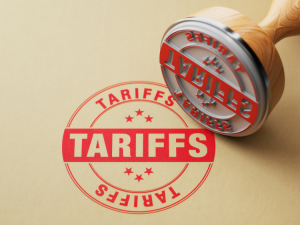
“Economically, the business case for products made in the us has become a lot more attractive," the CEO told Fox Business.

We’ll have a lot to talk about because construction is at the intersection of so many of today’s hot-button issues. The main question: Will construction thrive or dive in the rest of ’25? (Nothing wrong with a rhyme, even in serious times.)
CSPA, USW disappointed in Canadian government's actions on steel.
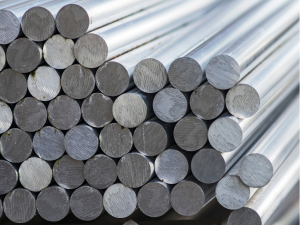
The moves include reciprocal procurement restrictions, import quotas, and the formation of stakeholder task forces for aluminum industries.
US housing starts tumbled in May to a five-year low, according to figures recently released by the US Census Bureau.
The actions, which includes tariffs, are necessary to protect the Canadian market from global overcapacity. They are also needed because other countries have redirected material to Canada as a result of higher US tariffs, Carney said.

Could we see an abrupt shift now that oil prices have spiked higher? Will we see a rebound in the rig count? Will this create a snap-loading effect (think waterski rope), where the industry suddenly does a 180-degree turn? If so, will that bring with it increased demand for steel products used by the energy industry?
Earlier this week, SMU polled steel buyers on an array of topics, ranging from market prices, demand, and inventories to imports and evolving market events.

Jeremy Flack of Flack Global Metals weighs in on USS, tariffs, and hedging in today's market.

Getting back to the price increases I mentioned at the top of this article, to what extent are they aimed at raising prices and to what extent are they aimed at stopping the bleeding that was happening in the second half of May, before President Trump announced the 50% tariff?
Details of a new tariff-rate quota on US imports of British steel are lacking in the new US-UK trade deal.
Trade talks are progressing between the US and the market is contemplating the future of Section 232 tariffs.

Ferrous scrap sentiment picks up.

The Trump administration has expanded the list of derivative steel products covered by the now 50% Section 232 tariff.
Cleveland-Cliffs plans to increase prices for hot-rolled (HR) coil to $950 per short ton (st) with the opening of its July spot order book. The Cleveland-based steelmaker said the price hike was effective immediately in a letter to customers dated Monday.

Steel market participants learned that negotiations between the US and Mexico include discussions about Section 232 tariffs on steel and aluminum despite President Trump’s June 3 proclamation increasing the tariffs from 25% to 50% for all steel and aluminum imports—except for those from the UK.
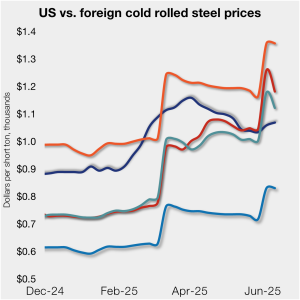
US cold-rolled (CR) coil prices edged up again this week, and most offshore markets moved in the opposite direction. But the diverging price moves stateside vs. abroad did little to impact pricing trends. The bigger impact was from Section 232, which were doubled to 50% as of June 3. The higher tariffs have resulted in […]

In short, when tariffs go up, jobs in consuming industries go down. There is conclusive evidence from past actions: safeguard tariffs in 2002 and Section 232 tariffs in 2018. It is happening again in 2025. The Trump administration wants foreign producers (and US retailers) to absorb tariff increases (except in antidumping cases, where foreign absorption of tariffs is illegal).

If you’re feeling a sudden jerk and a case of tariff whiplash coming on, you’re not alone.

Steel equities and steel futures fell hard after news broke earlier this week that the US and Mexico might reach an agreement that would result in the 50% Section 232 tariff coming off Mexican steel. The sharp declines didn’t make much sense, especially if, as some reports indicate, Mexico might agree to a fixed quota. They didn't make sense even if steel flows between the US and Mexico remain unchanged.
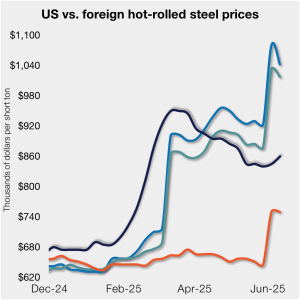
Domestic hot-rolled (HR) coil prices edged up marginally again this week, while offshore prices ticked down.

We’ll have a lot to talk about because construction is at the intersection of so many of today’s hot-button issues. The main question: Will construction thrive or dive in the rest of ’25? (Nothing wrong with a rhyme, even in serious times.)
ArcelorMittal’s (AM) Hamilton location to be shuttered, wire production shifting to Montreal.

Even before the news about Mexico, I didn’t want to overstate the magnitude of the change in momentum. As far as we could tell, there hadn’t been a frenzy of new ordering following President Trump’s announcement of 50% Section 232 tariffs. But higher tariffs had unquestionably raised prices for imports, which typically provide the floor for domestic pricing. We’d heard, for example, that prices below $800 per short ton for hot-rolled (HR) coil were gone from the domestic market – even for larger buyers.
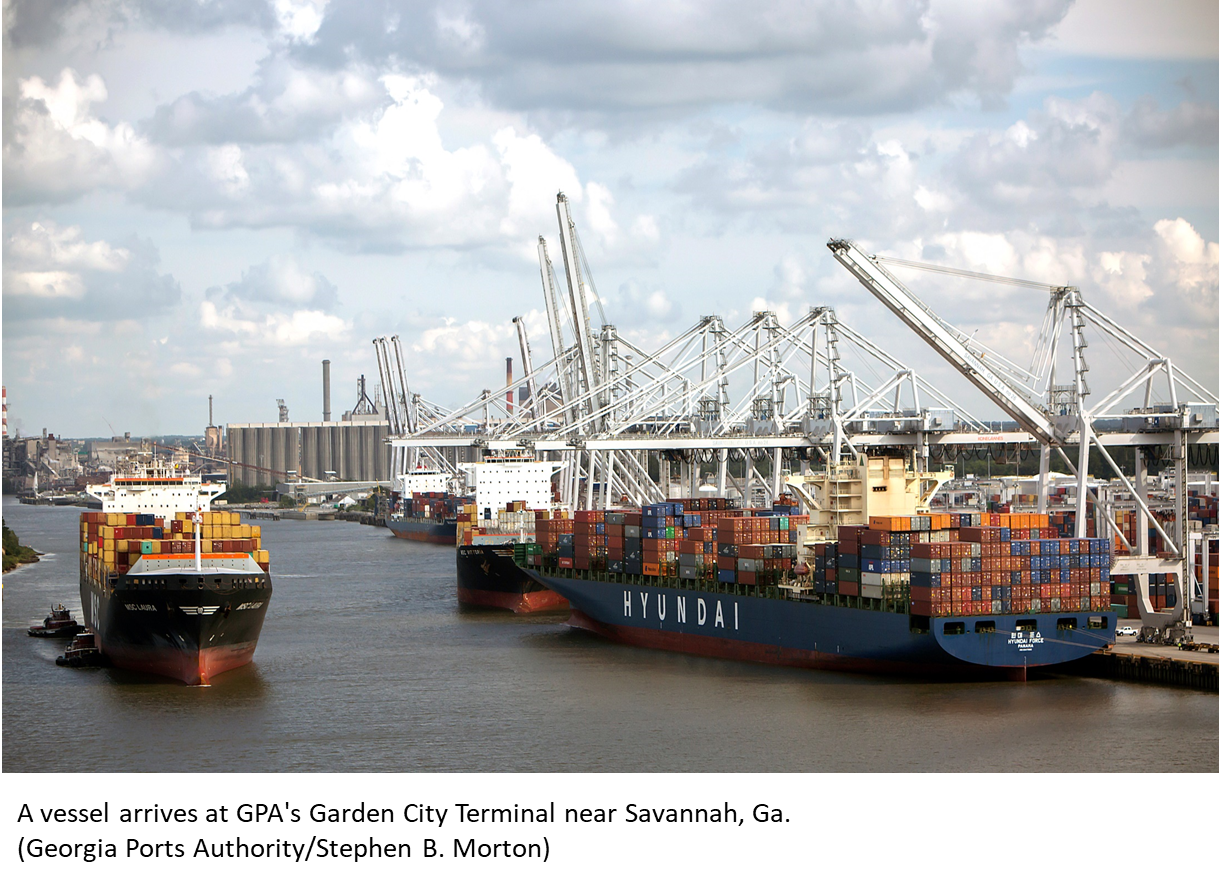
Subdued demand is causing importers to cancel hot-rolled (HR) coil orders and renegotiate the terms of shipments currently enroute to the US, importers say. An executive for a large overseas mill said customers might find it difficult to justify making imports buys after US President Donald Trump doubled the 25% Section 232 tariff on imported steel […]